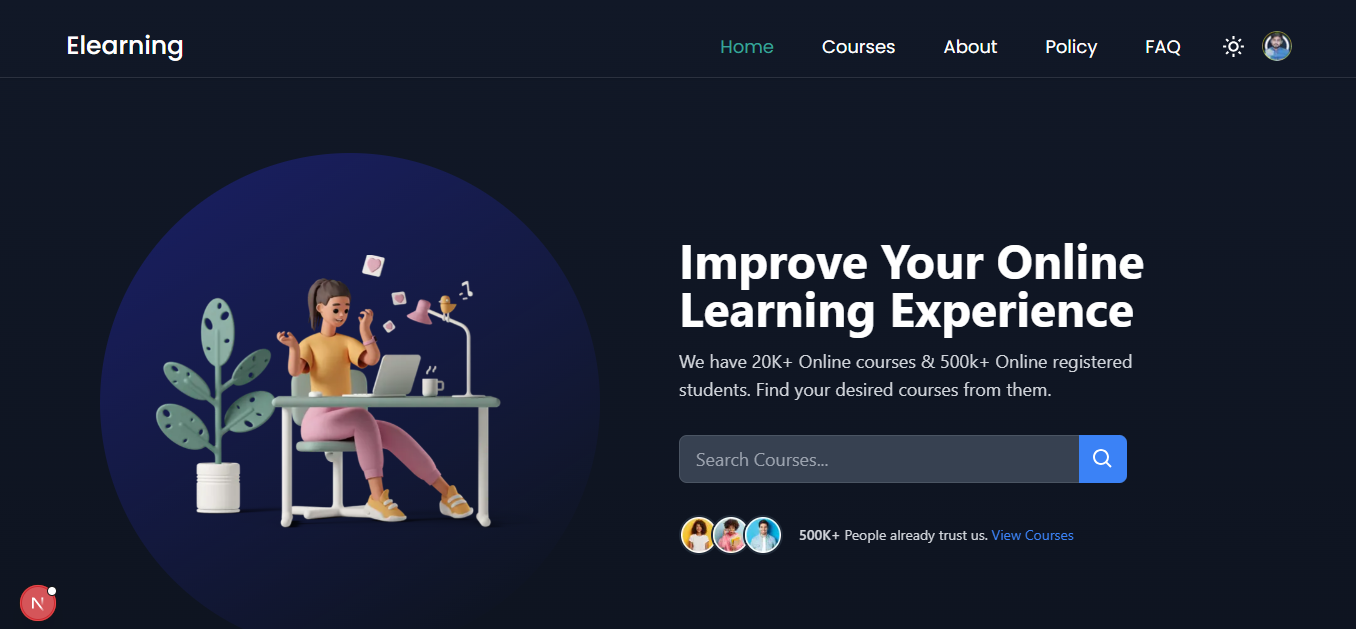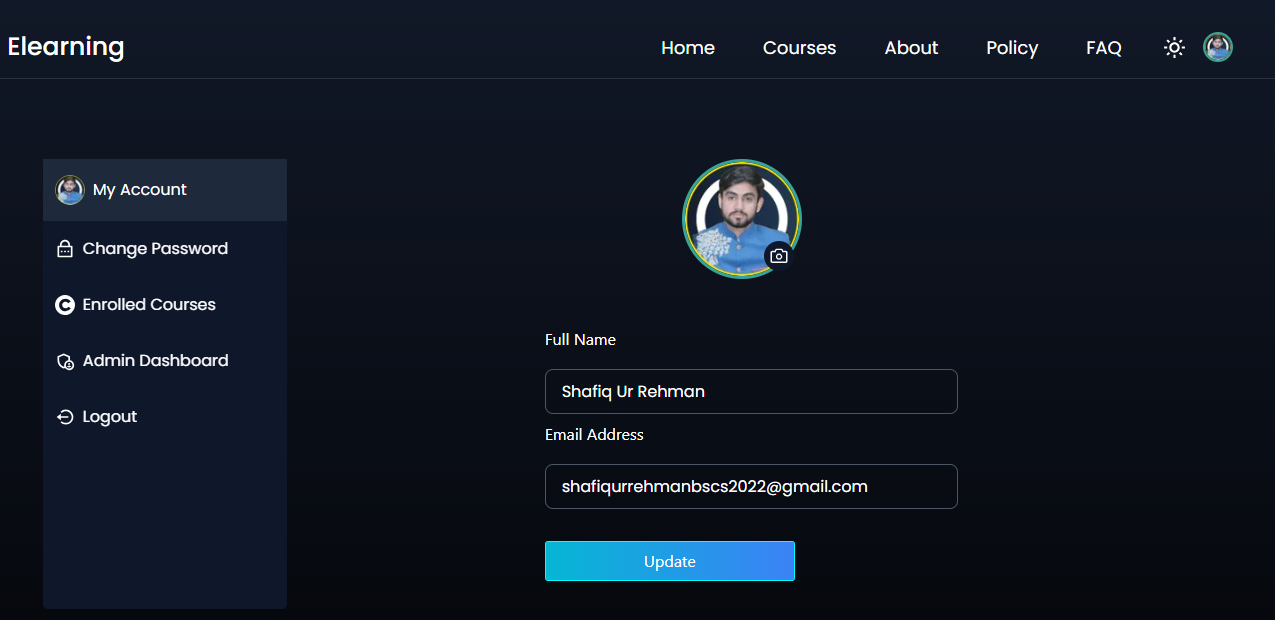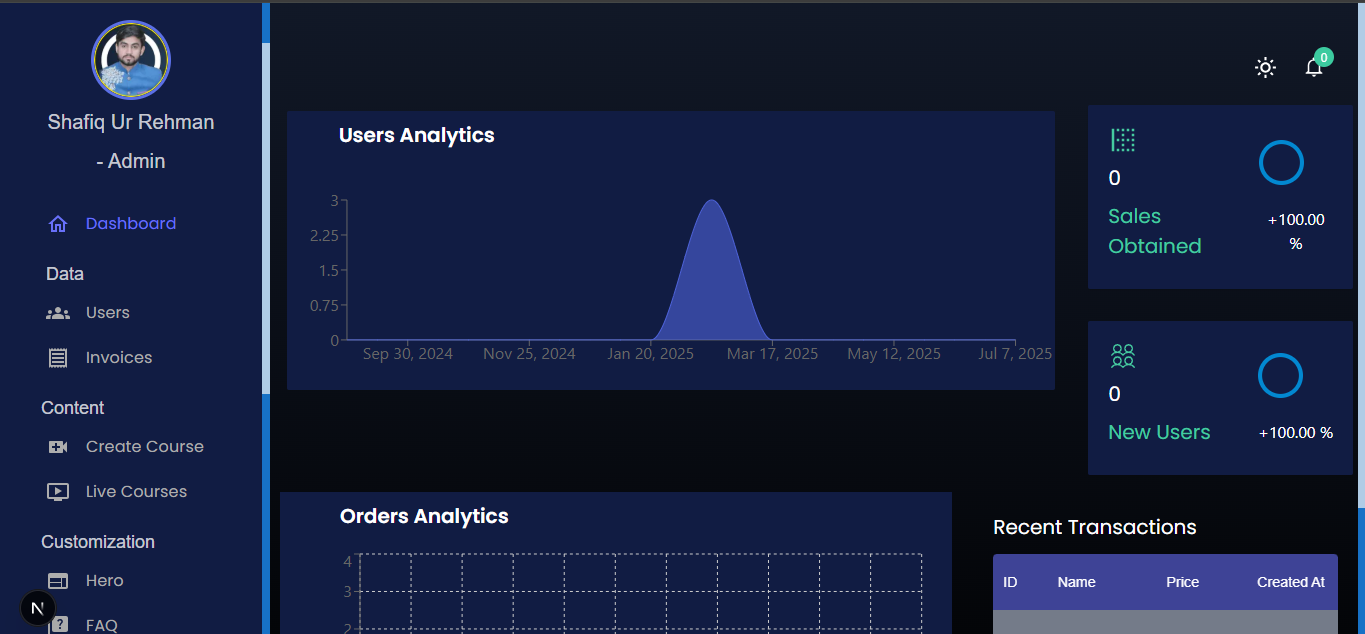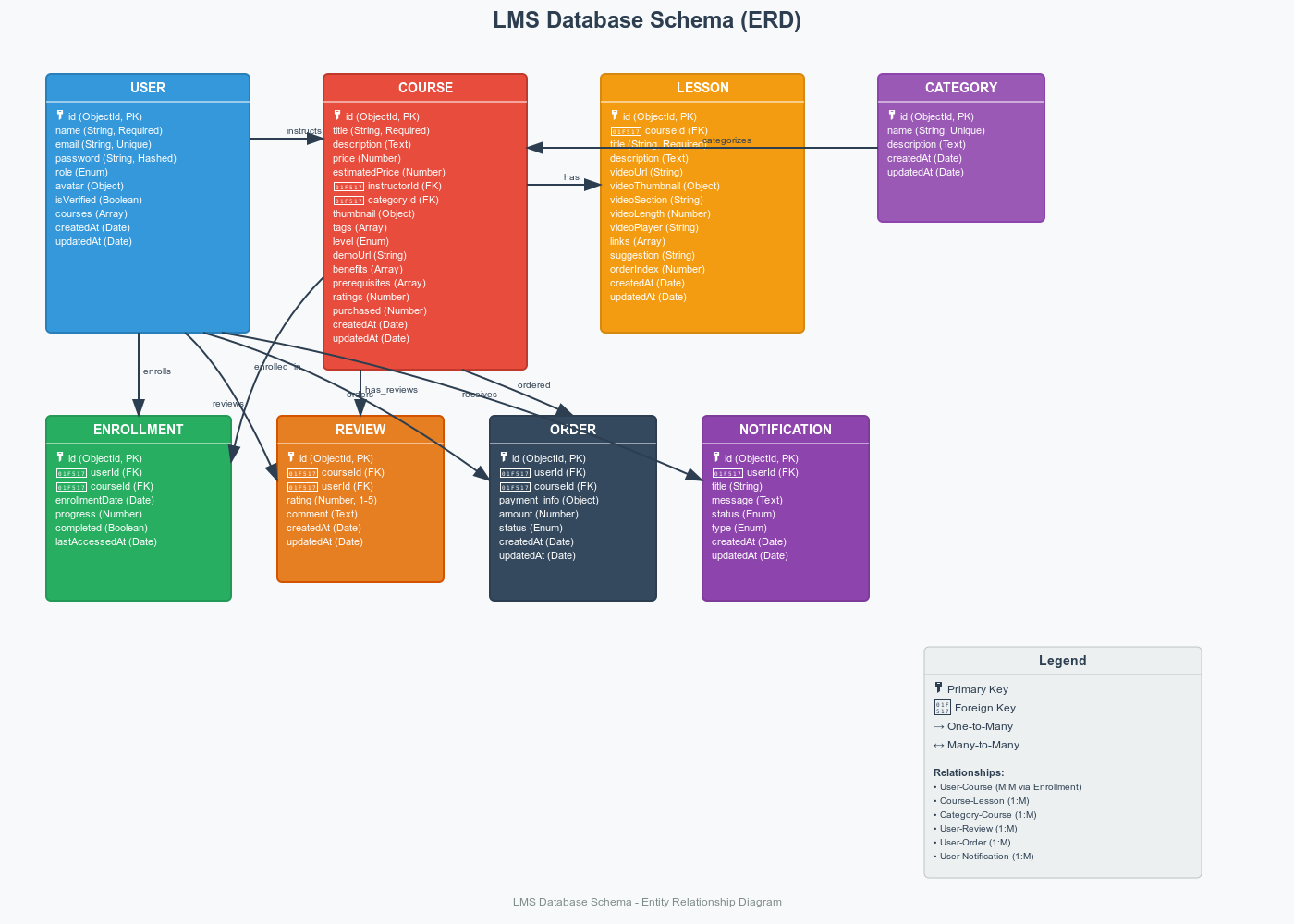Elearning
E-Learning Platform Case Study
A comprehensive, production-ready e-learning management system built in 2025 using the MERN stack. This modern platform delivers seamless learning experiences through real-time communication, secure payment processing, and advanced analytics. Designed for scalability and performance, it serves educational institutions, individual educators, and corporate training programs with enterprise-grade features and mobile-responsive design.
Project Overview
Elearning represents a comprehensive e-learning ecosystem designed to revolutionize online education. Built with modern MERN stack technologies, this platform seamlessly integrates course management, payment processing, and real-time communication features. The system supports multiple user roles including students, instructors, and administrators, providing each with tailored interfaces and functionalities to ensure optimal learning and teaching experiences.

User Experience
Students enjoy an intuitive dashboard that tracks their learning progress, manages course enrollments, and facilitates seamless communication with instructors. The platform features responsive design with dark/light themes, making it accessible across all devices. Advanced features include course bookmarking, progress analytics, certificate generation, and integrated payment systems that make purchasing and accessing courses effortless and secure.

Admin Functionality
The administrative interface provides comprehensive platform management capabilities including user administration, course oversight, and detailed analytics dashboards. Administrators can monitor platform performance through real-time metrics, manage content moderation, handle payment disputes, and access extensive reporting tools. The system includes automated notification systems, bulk operations for user management, and advanced security controls to ensure platform integrity.

Key Features
Comprehensive features designed for modern online learning
Multi-Role Authentication
JWT-based security with admin, instructor, and student roles
Real-Time Communication
Socket.io integration for live messaging and notifications
Secure Payment Processing
Stripe integration with webhook handling for course purchases
Advanced Analytics Dashboard
Comprehensive reporting with visual charts and data export
Course Management System
Rich course builder with multimedia support and progress tracking
Video Streaming Platform
VdoCipher integration for DRM-protected content delivery
Multi-Vendor Support
Comprehensive instructor dashboards with revenue analytics
Mobile-Responsive UI
Dark/light theme support with Material-UI components
Social Authentication
Google and GitHub OAuth integration via NextAuth.js
Performance Optimization
Redis caching, lazy loading, and CDN integration
Project Statistics
Lines of Code
Components
API Endpoints
DB Collections
Database Architecture & ERD
Comprehensive database design with entity relationships
The database architecture is designed with optimal relationships between entities, ensuring data integrity and efficient querying. The ERD below illustrates the complete schema including users, courses, enrollments, payments, and content management.
Entity Relationship Diagram

Core Entities
Users, Courses, Lessons, Enrollments, Orders
Relationships
One-to-Many, Many-to-Many associations
Indexing
Optimized queries with proper indexing
System Architecture
The platform follows a modern microservices-inspired architecture with clear separation of concerns. The frontend leverages Next.js 14's App Router for optimal performance and SEO, while the backend implements a robust Express.js API with JWT authentication, role-based access control, and comprehensive error handling.
Database Architecture
MongoDB serves as the primary database with optimized schemas for users, courses, orders, and notifications. The database design supports efficient queries through proper indexing, with Redis providing session management and caching for improved performance.